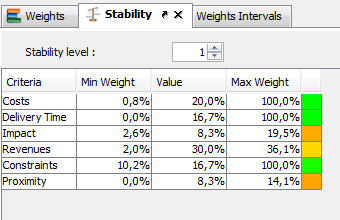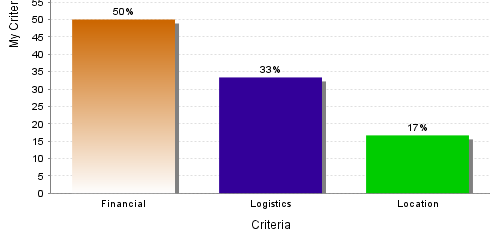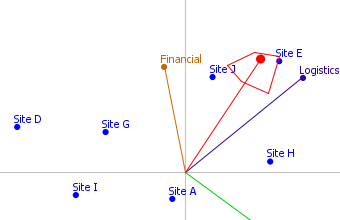 English
English Français
Français
Stability Interval
The stability intervals have multiple benefits when analyzing a solution:
- Large intervals provide more confidence in the solution as it represents a more robust solution. Small intervals on the other hand, highlight that the decision maker might want to take a second look at the solution and dig deeper in the results.
- When multiple stakeholders are involved to set the weights of the different criteria, stability intervals provide a way to reassure them that different sets of weights would link to the same solution.
Walking Weights
The walking weights are another great sensitivity analysis tool in D-Sight. The decision maker can modify the weights of the different criteria and see how the results would change in real time. This allows to assess the impact of a change of weight on the ranking of the alternatives immediately or in the visual analysis for instance.
Since all results are updated in real time, the walking weights offer a good support for discussion when the weights are somewhat flexible. In addition, when multiple stakeholders are involved, this tool provides them a way to interact easily.
Gaia Brain
The GAIA brain can be seen as the next step of the walking weights. It allows the visualization of the uncertainty on the criteria weights and how the solution would move depending on this uncertainty. The decision maker can specify a range in which the weights of the different criteria would be included. D-Sight will then automatically calculate how the decision axis would move.



